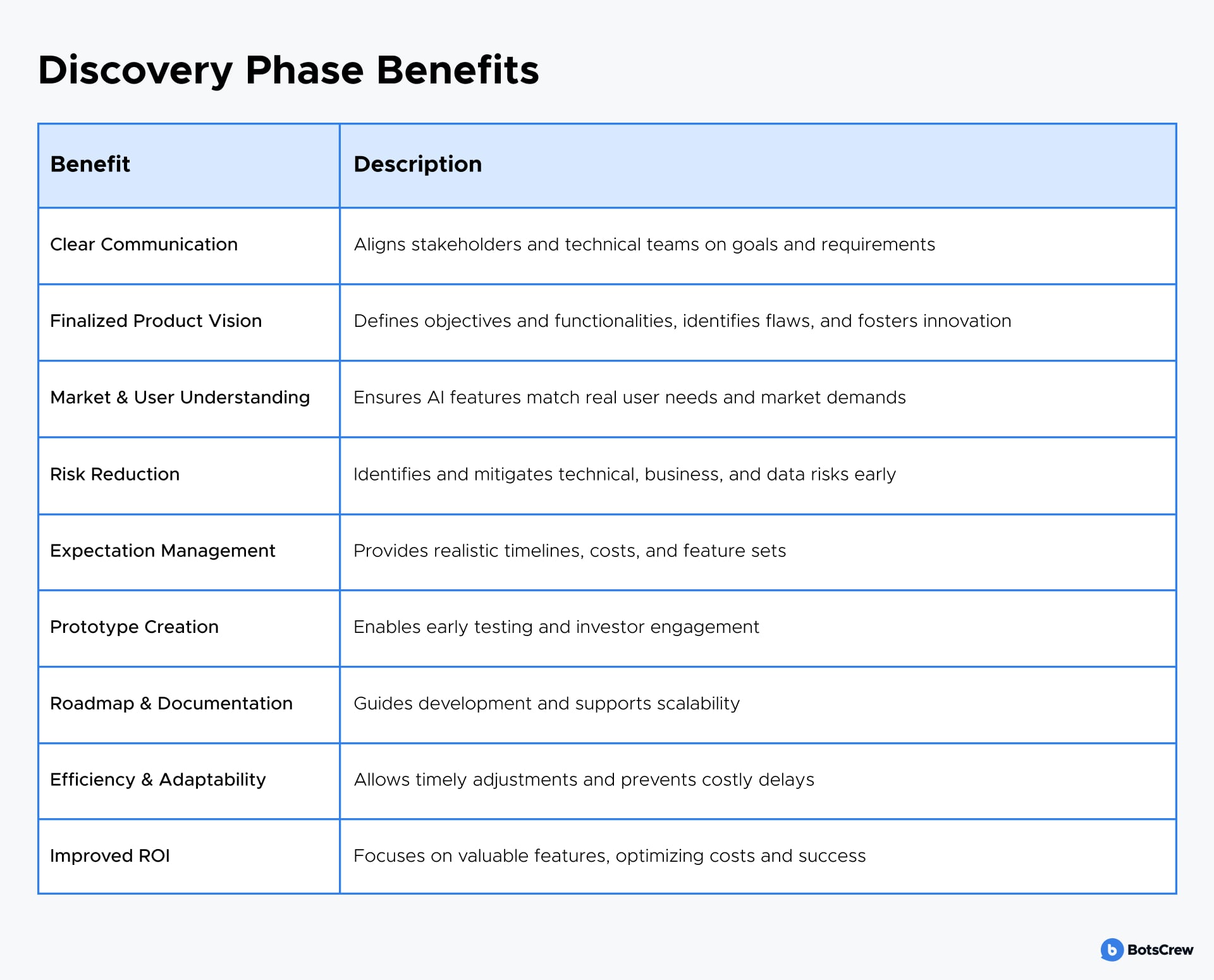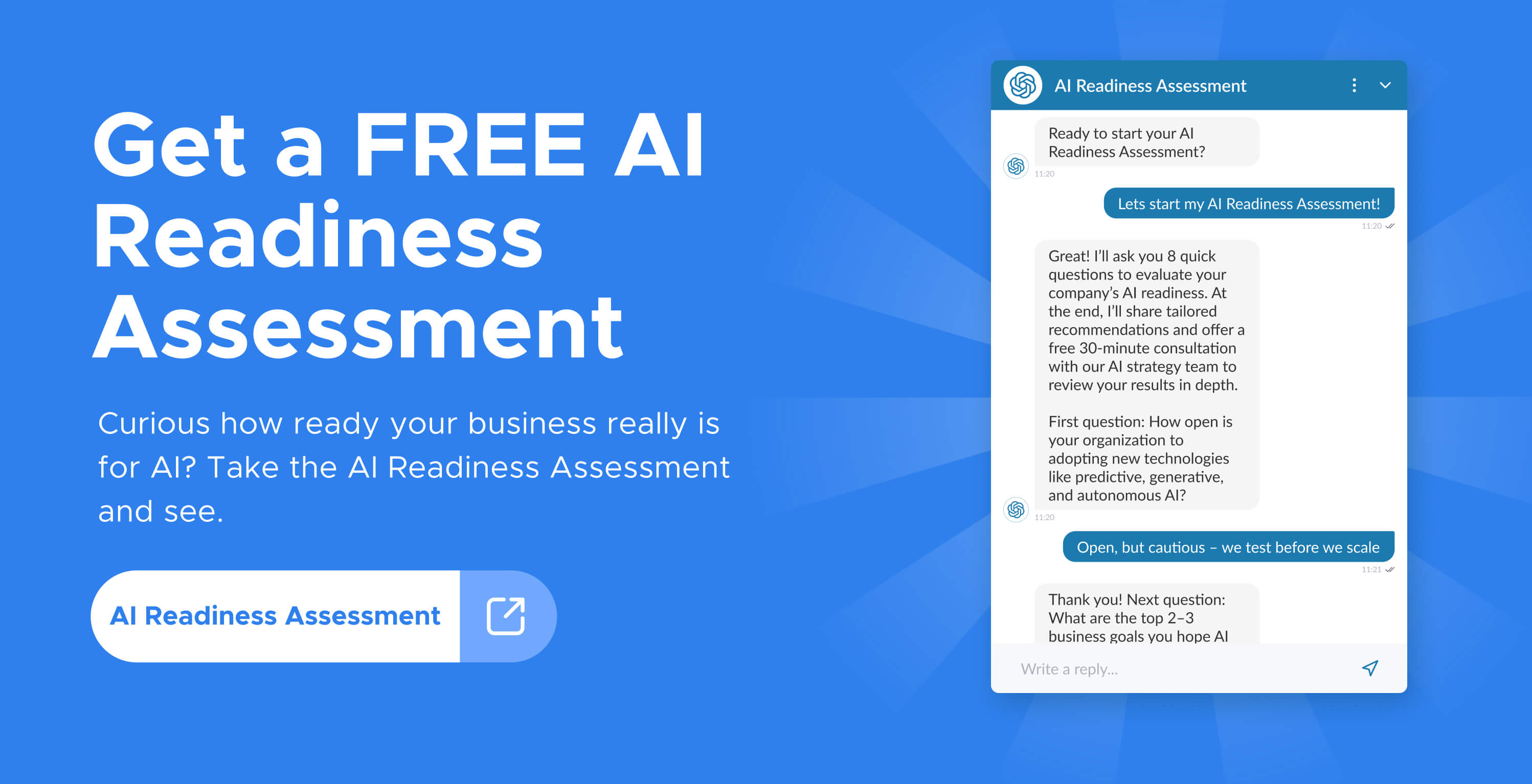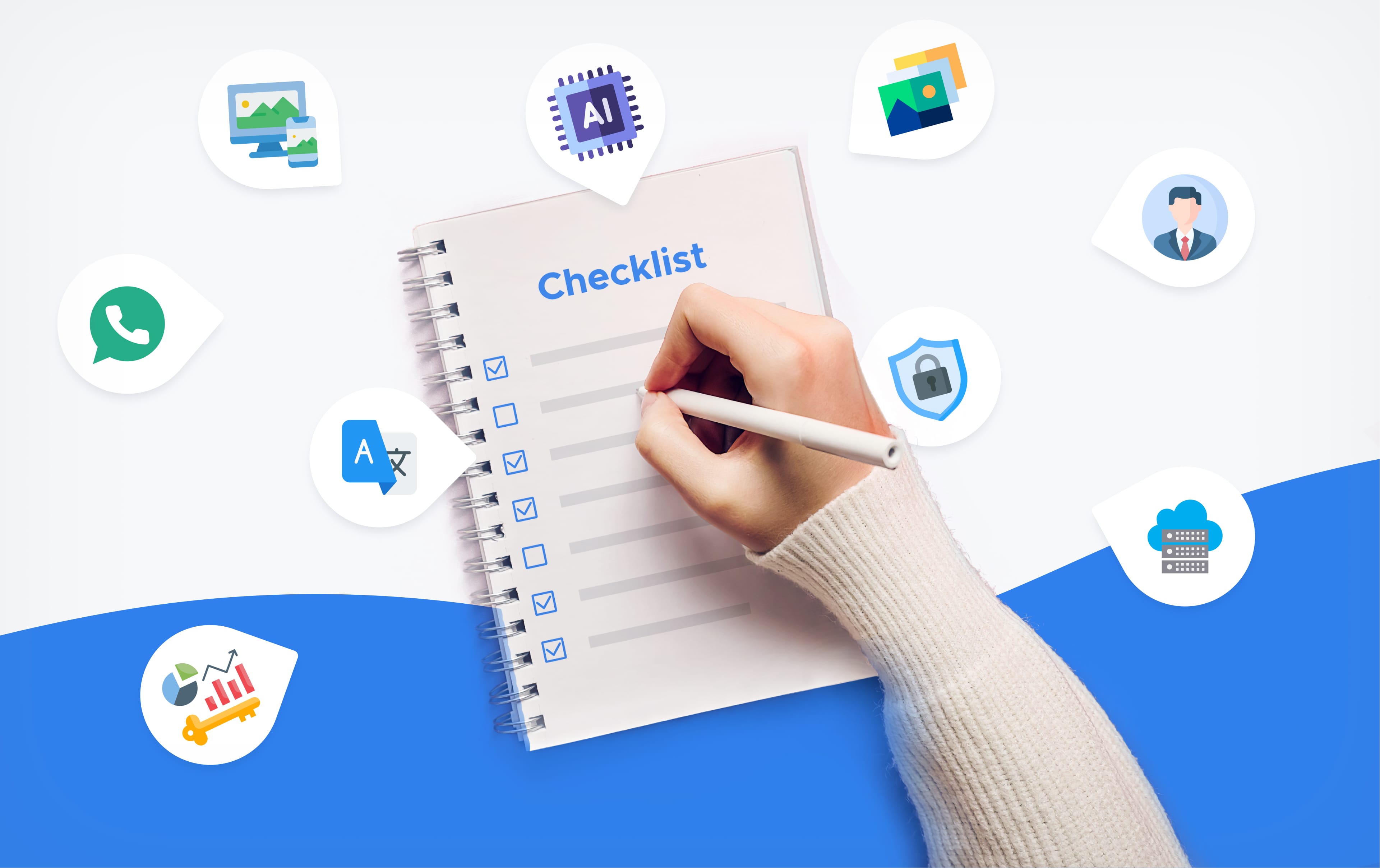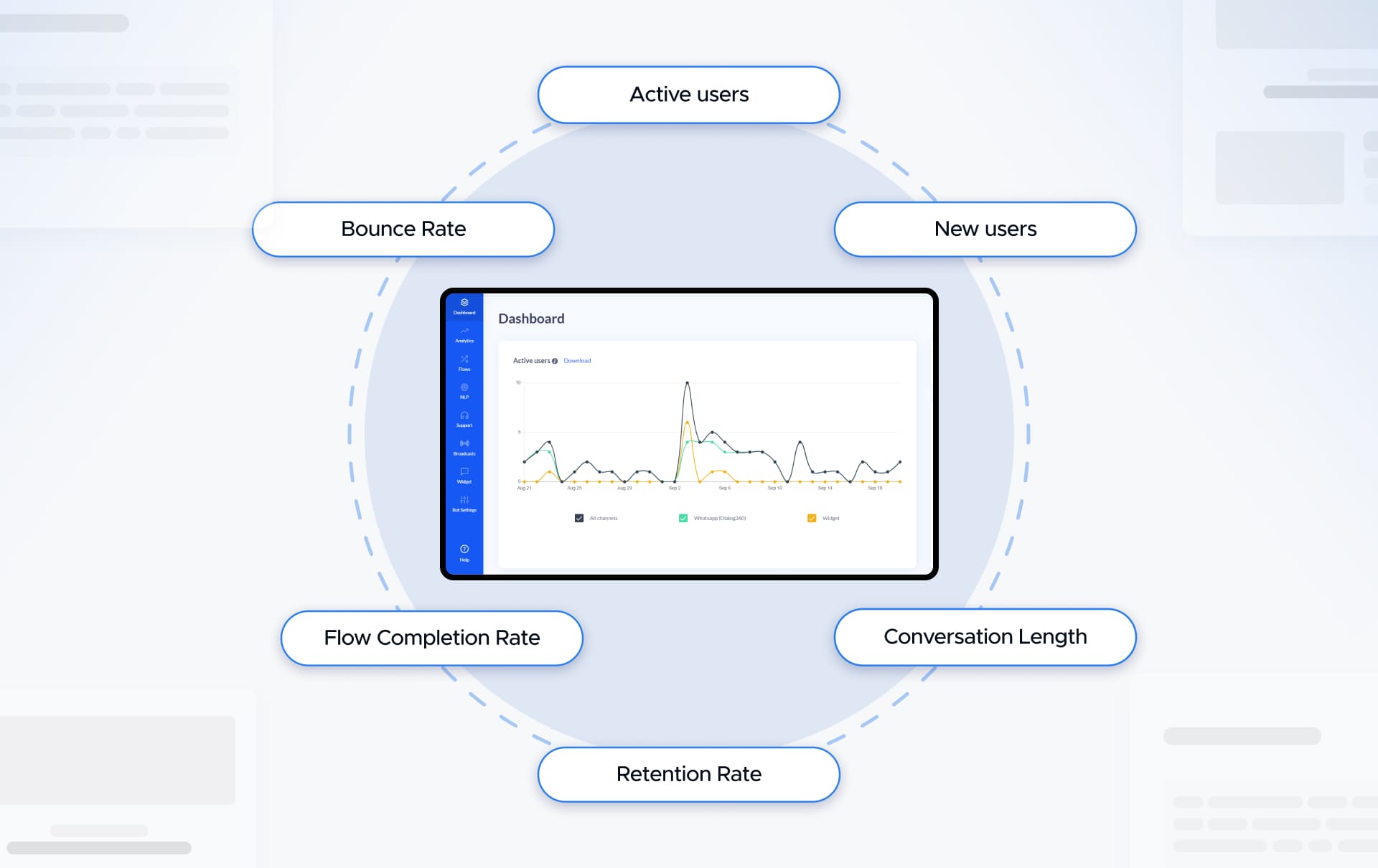The Discovery Phase: Crafting an Effective AI Agent Project Roadmap
Successful AI projects don't start with coding — they start with a clear, strategic roadmap. In this article, we’ll explore how a structured discovery phase helps businesses align AI initiatives with real goals, minimize risks, and maximize ROI.
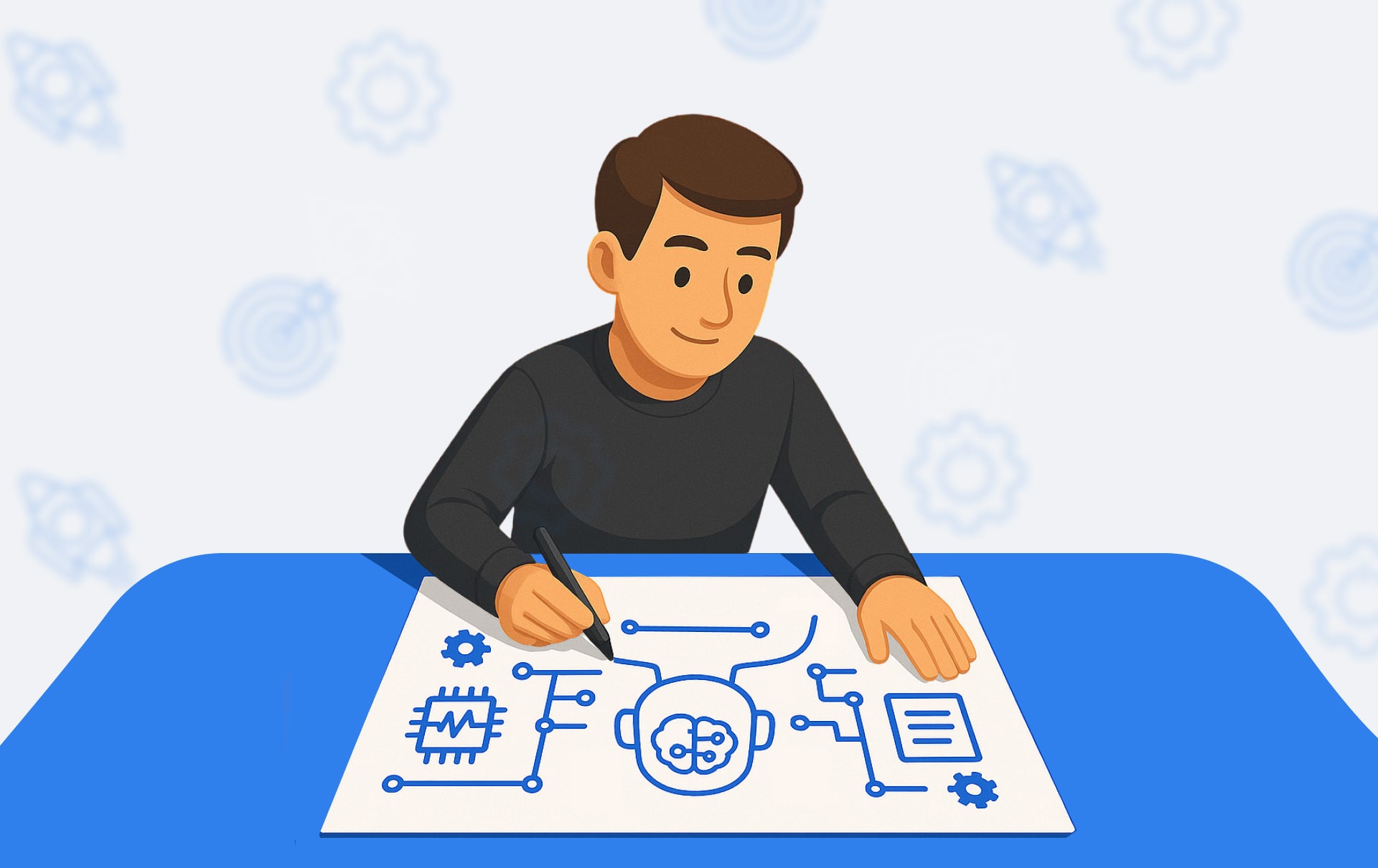
In the rapidly evolving landscape of enterprise AI, the road to successful implementation is often fraught with challenges. Surprisingly, studies indicate that nearly 85% of AI projects fail or stall at the pilot stage, largely due to inadequate planning. Just as architects rely on blueprints to construct stable buildings, executives and CTOs must lean on a structured AI discovery phase to build resilient AI initiatives.

What is the AI Discovery Phase and Why It Matters
The AI discovery phase is the essential initial stage in an AI project's lifecycle, dedicated to aligning AI capabilities with strategic business objectives. Skipping this critical phase frequently results in wasted resources, missed opportunities, and competitive disadvantages.
At its core, a robust AI discovery phase encompasses:
- AI use case discovery
- AI requirements gathering
- Feasibility analysis
- ROI assessment
- Creation of a structured AI implementation roadmap
Companies investing in thorough upfront planning consistently report higher success rates in their AI initiatives.
Benefits of Including a Discovery Phase in AI Projects
Establish Clear Communication Between Stakeholders and Teams
The discovery phase fosters regular, in-depth communication that helps the development team understand business needs, technical requirements, and project goals. This enables the selection of the most relevant AI technologies and approaches.
Finalize and Validate the Product Vision
It allows teams to clarify the main objectives, define required functionalities, identify flaws in the concept, and generate innovative ideas, ensuring the AI solution aligns with strategic goals.
Gain a Deep Understanding of the Market and User Needs
Market and competitor analysis during discovery helps identify real user needs, preventing the development of unnecessary AI features and focusing on what truly adds value to the target audience.
Reduce Risks and Avoid Costly Mistakes
Early identification of technical, business, and data-related risks helps avoid budget overruns and missed deadlines. It also ensures the chosen AI technologies and data strategies are appropriate, reducing expensive fixes later.
Manage Expectations with Realistic Planning
The discovery phase produces a comprehensive project overview, including defined features, timelines, and cost estimates, which align business strategy with development progress and minimize surprises.
Create Prototypes to Test and Attract Investment
Building prototypes during discovery allows early user and investor feedback, validating AI concepts and increasing chances of funding and market acceptance.
Develop a Clear Roadmap and Documentation
Detailed documentation and a well-structured roadmap guide development, facilitate team coordination, and support future scalability and maintenance of AI solutions.
Enhance Efficiency and Enable Mid-Project Adjustments
Discovery enables timely identification of issues and course corrections, keeping AI projects on track and adaptable to changing requirements or market conditions.
Increase Return on Investment (ROI)
By focusing on essential features and eliminating redundant ones, discovery optimizes resource use and improves the likelihood of delivering a successful AI product that meets user expectations.
Step 1: AI Use Case Discovery
Effective AI projects begin with a clear identification and prioritization of AI use cases. An AI discovery workshop serves as an excellent vehicle for this, bringing stakeholders from IT, business leadership, and domain experts together to pinpoint AI opportunities aligned with business pain points and strategic goals.

The discovery phase helps better identify project scope and goals, leading to more accurate estimates and avoiding costly changes later.
Prioritization Criteria:
- Potential ROI: Assess projected financial and operational benefits. Here’s a quick guide on how to measure the ROI: Measuring ROI
- Data availability: Evaluate the accessibility and quality of data required.
- Implementation complexity: Determine the level of complexity regarding technology and integration.
- Regulatory considerations: Check compliance needs and potential legal implications.
Tip: Always prioritize use cases with clear, measurable business outcomes to secure stakeholder buy-in and drive meaningful impact.
Ready to identify the best AI use cases for your business? Schedule an AI Discovery Workshop with BotsCrew today, and let our experts help you pinpoint high-impact opportunities tailored specifically to your needs.
Step 2: AI Requirements Gathering and Feasibility Analysis
Once a suitable use case is chosen, rigorous requirements gathering ensures the project stays viable:
Key considerations include:
- Data Requirements: Identify necessary datasets, their current state, quality, and whether additional data preparation or labeling is required.
- Technology Infrastructure: Evaluate if existing platforms suffice or new technology integrations are necessary, including cloud services and specific machine learning frameworks.
- Talent and Skills: Identify gaps in your internal capabilities and assess whether additional training or external hiring is required.
- Feasibility Analysis: Conduct a preliminary proof-of-concept (PoC) or engage expert consultations to validate the practical feasibility of the selected AI use case.
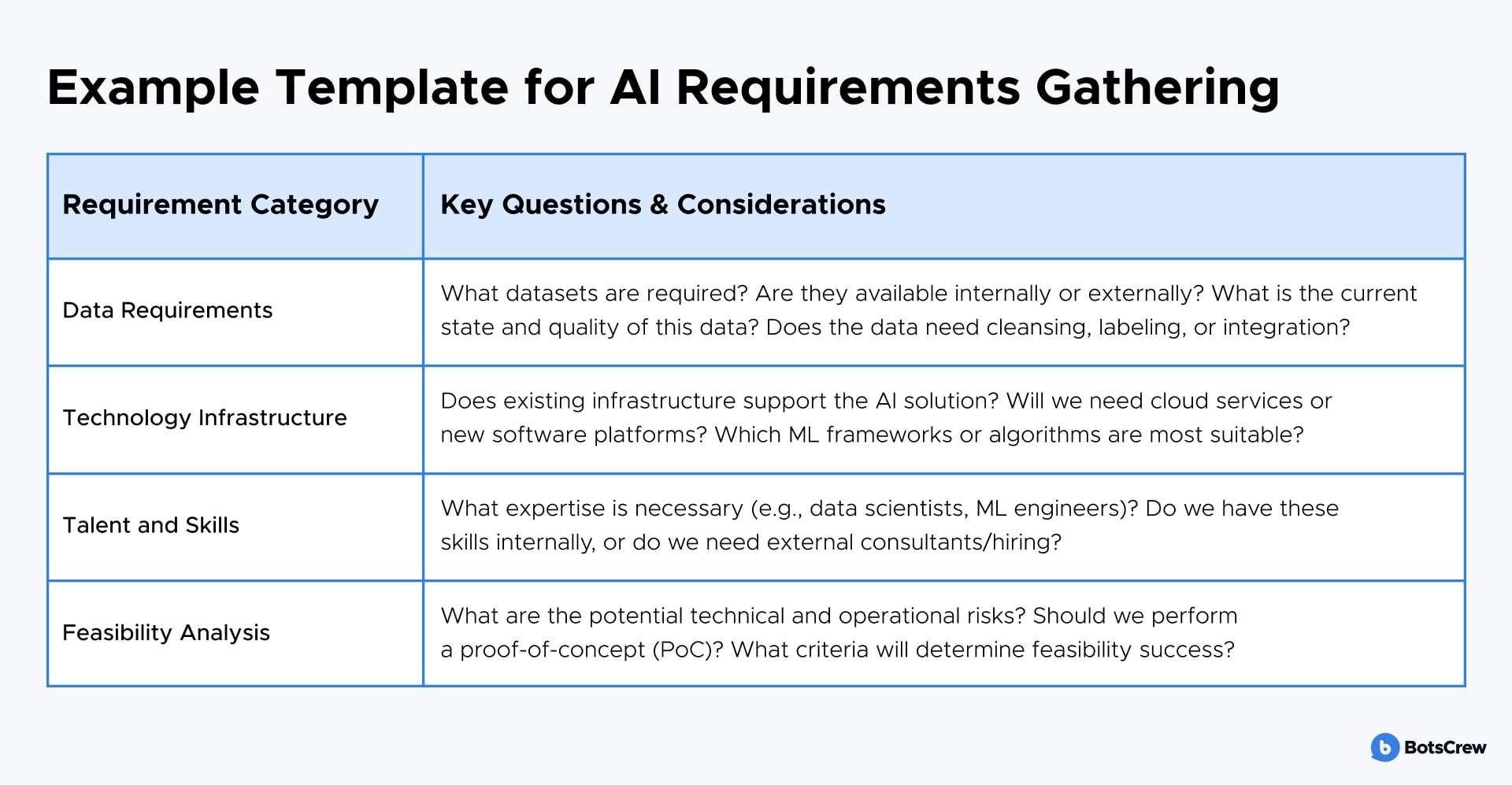
Sample Scenario:
AI Customer Service Chatbot
- Data Requirements: Historical customer support chat logs, structured FAQs, product databases. Data requires cleansing and labeling.
- Technology Infrastructure: Integration needed with existing CRM and customer support software, cloud-based NLP frameworks (e.g., AWS Lex or Google Dialogflow).
- Talent and Skills: Need additional NLP engineers and chatbot development specialists. External training or hiring required.
- Feasibility Analysis: Quick PoC to validate accuracy and response time, measured against predefined success criteria (e.g., 80% accuracy).
Recommendation: Regularly revisit and update the requirements gathering document as the project progresses to maintain clarity and alignment.
A structured AI project consulting approach during this phase can greatly enhance project viability assessments.
Step 3: Crafting the AI Implementation Roadmap
With clear use cases and requirements identified, creating an AI implementation roadmap provides clarity and direction for the project:
- Phase 1: Pilot/Proof-of-Concept (PoC): Test the AI solution on a limited scale to validate technical and business feasibility.
- Phase 2: Minimum Viable Product (MVP): Deploy the AI solution within a confined department or process to demonstrate value quickly.
- Phase 3: Scaling and Integration: Expand implementation across broader departments and integrate fully into existing systems.
- Phase 4: Continuous Improvement: Continuously monitor performance, make iterative improvements, and scale capabilities.
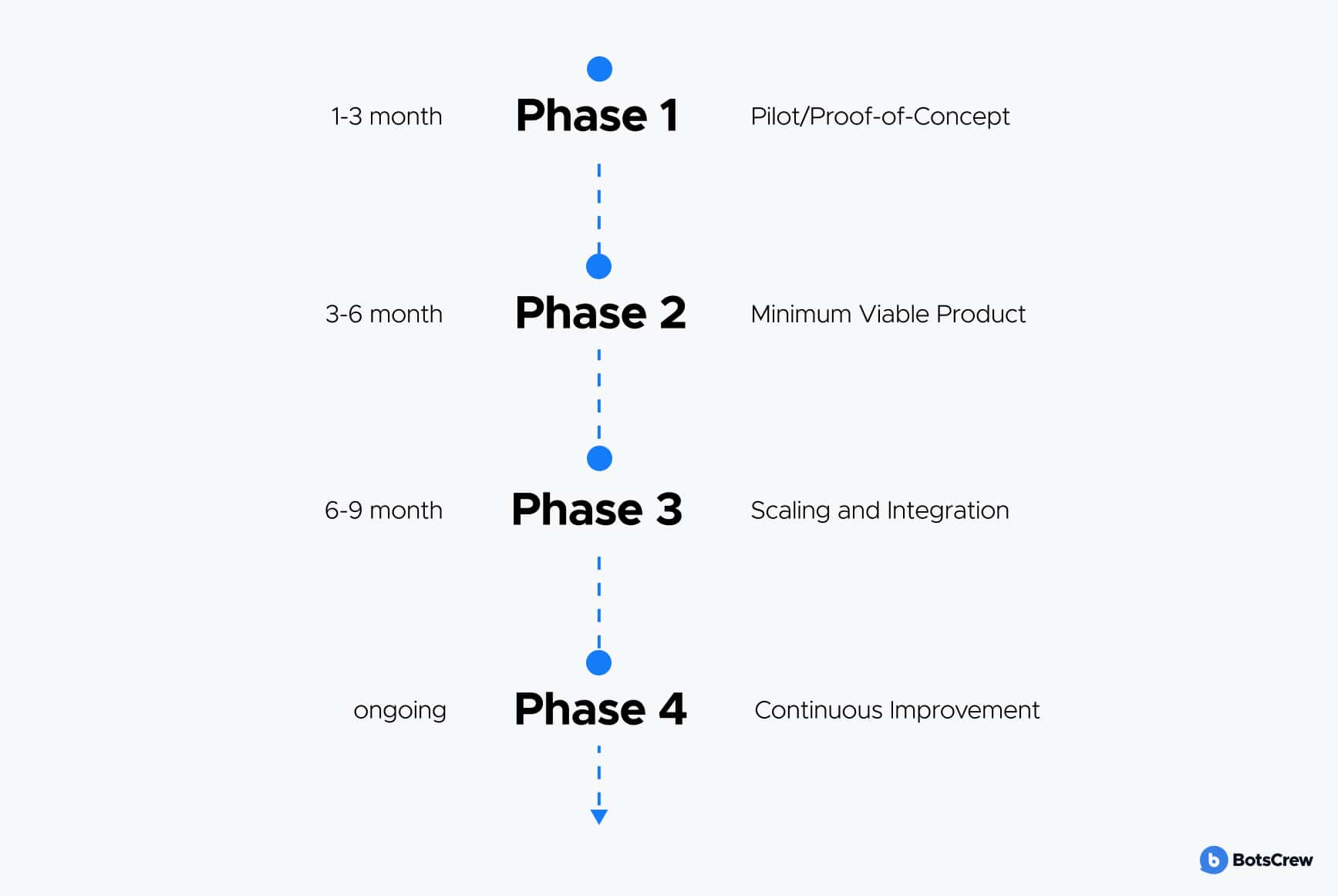
Governance, Risk, and Stakeholder Alignment
The Project Management Institute (PMI) notes that poor risk management, often linked to inadequate discovery, is a primary reason for a 70% project failure rate, underscoring the need for early risk identification during discovery.

An effective roadmap must also address often-overlooked aspects:
- Stakeholder Alignment: Maintain regular communications and clearly define responsibilities to sustain organizational support.
- AI Governance Framework: Establish governance to manage project scope, decision-making processes, and ethical considerations such as data privacy.
- Risk Assessment: Proactively identify potential risks—technical feasibility, regulatory compliance, data privacy, model bias—and include mitigation plans within the roadmap.
- Change Management: Integrate user adoption strategies, training programs, and organizational readiness initiatives directly into your roadmap.
Example Outcome: The AI Agent Project Roadmap
A successful discovery phase yields a detailed roadmap document, clearly summarizing:
- Chosen AI use case
- Defined success criteria and measurable KPIs
- Explicit timelines and milestones
- Resource allocation and budgeting
- Projected ROI and anticipated business impacts
For instance, an AI customer service agent roadmap might look like this:
- Initial Pilot: Launch a chatbot to handle basic queries over 3 months.
- System Integration: Integrate the chatbot fully with CRM and support platforms over 6 months.
- Multilingual Expansion: Extend capabilities to multiple languages and global user support by year-end.
This structured approach ensures alignment and clarity throughout the project's lifecycle.
Common Pitfalls of Skipping the Discovery Phase in AI Projects
Unclear or Incomplete Requirements: Without discovery, projects often start with misunderstood or incomplete requirements, resulting in misaligned expectations between stakeholders and the development team. This leads to frequent changes and inefficiencies during execution.
Scope Creep: Lack of upfront planning and stakeholder alignment makes projects vulnerable to scope creep, where features and requirements continuously expand unpredictably, causing budget overruns and timeline delays.
Poor Stakeholder Buy-In and Alignment: Discovery phases engage stakeholders early to build consensus. Skipping this can result in less buy-in, miscommunication, and conflicting priorities, which hinder smooth execution and acceptance of AI solutions.
Technical Feasibility and Architecture Risks: AI projects require careful evaluation of technical feasibility, data readiness, and architecture. Skipping discovery can lead to selecting inappropriate models, architectures, or data strategies, causing costly rework and technical dead ends.
Weak Business Case and Market Misalignment: Without discovery, AI projects risk building solutions that do not meet real user needs or market demands, leading to wasted investment and failed adoption.
Data Quality and Governance Issues: AI relies heavily on quality data. Skipping discovery often means insufficient assessment of data quality, governance, and domain expertise involvement, which can degrade AI model performance and reliability.
Increased Risk of Project Adjustments and Rework: Projects without discovery face more frequent adjustments as new requirements emerge, increasing inefficiencies and costs.
Unrealistic Budget and Timeline Expectations: Skipping discovery often leads to underestimating the resources and time needed, resulting in rushed development, technical debt, and budget overruns.
Compromised Product Quality and Usability: Without thorough user research and requirement validation in discovery, AI products may fail to solve real problems or provide satisfactory user experiences.
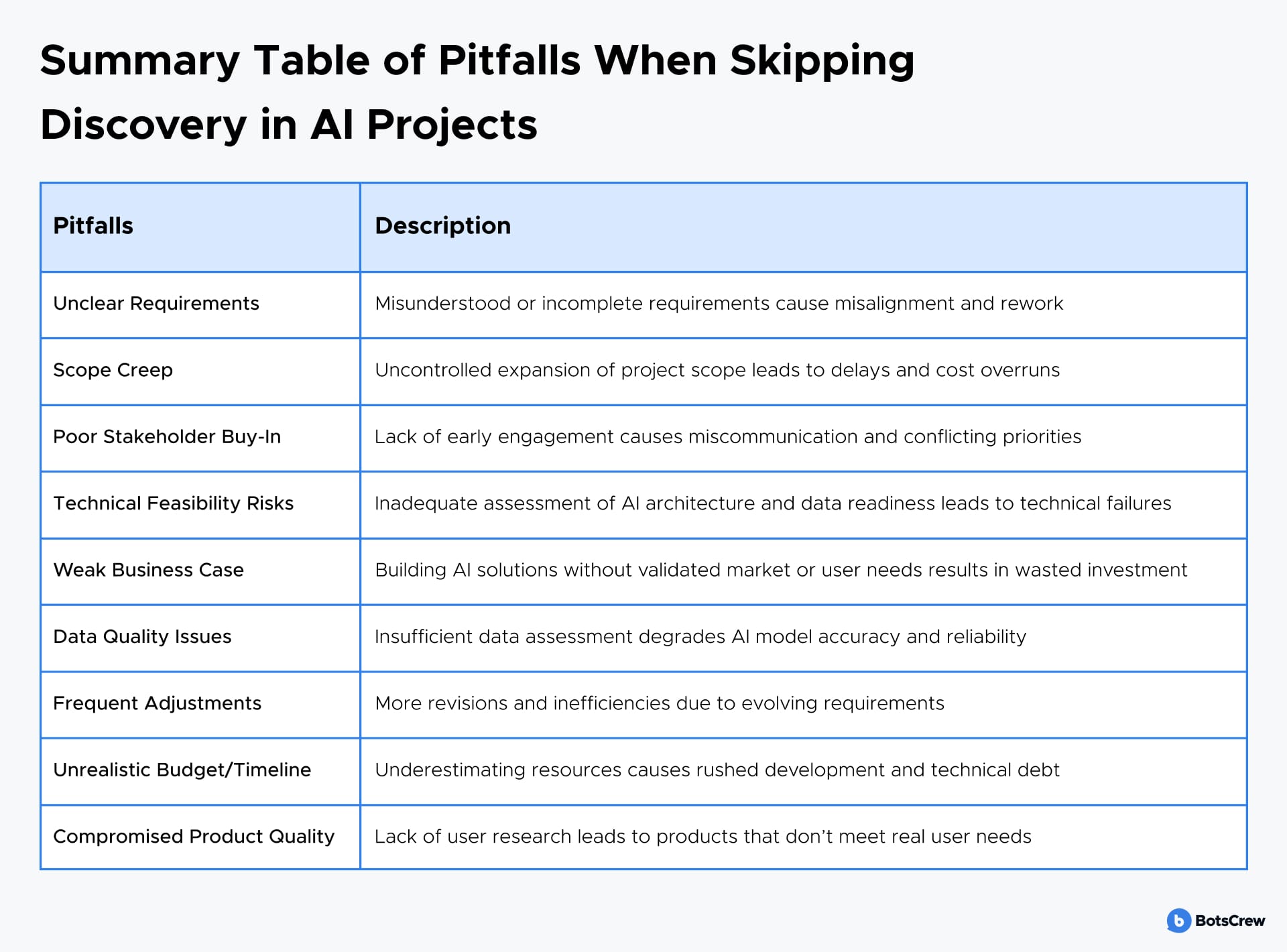
From Discovery to Delivery: Ensuring Success
An effective discovery phase isn't merely preparatory—it's foundational. Organizations investing in a meticulous discovery process consistently experience faster implementation cycles, optimized resource allocation, and higher stakeholder confidence. According to Gartner, organizations prioritizing early-stage planning significantly outperform peers in achieving targeted AI ROI.
Ready to Transform Your AI Initiatives?
Enterprise AI success hinges on a detailed discovery phase roadmap. With the right preparation, businesses transform AI potential into tangible business outcomes.
Take the next step today: Schedule an AI Discovery Workshop with our experts and develop a customized roadmap tailored specifically to your organization's needs. With a clear roadmap, your AI agent's success is not just possible—it's inevitable.
Don’t leave your AI project to chance—start with a clear, strategic foundation. Book an AI Discovery Workshop with our experts today and build a custom roadmap that ensures your AI initiatives deliver measurable success.






